Haiti
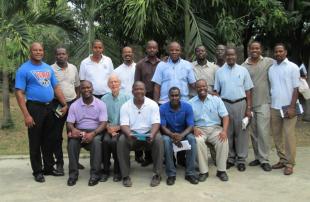
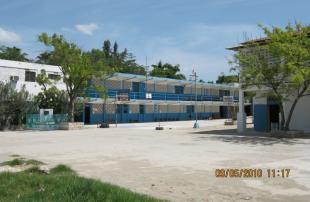
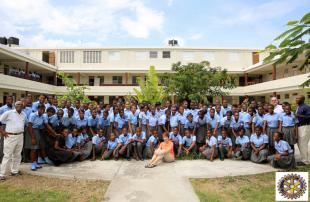
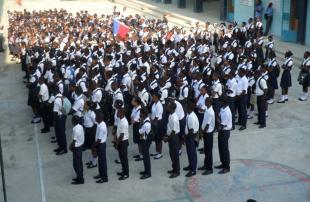
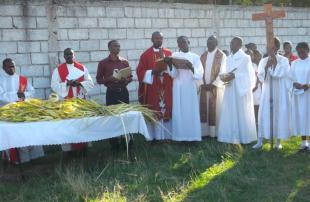
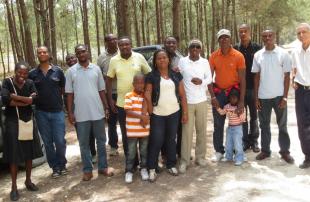
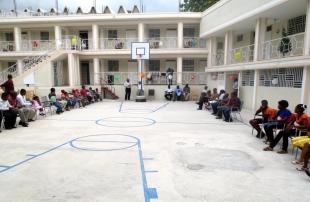
VIATORIAN PRESENCE IN HAITI
In February 1964, Haitian Jesuits were expelled on charges of conspiracy against state security. In response to a request from the Holy See, the first Clerics of Saint Viator arrived in the summer of 1965 to fill the void left by the Jesuits after their expulsion by the François Duvalier regime. They assumed responsibility for the Major Seminary of Our Lady in Port-au-Prince in 1965.
These missionaries from Canada did not only stay at the Major Seminary. Thus, in 1966, Father Jacques Beaudry and Brother Jacques Gratton arrived at the Sainte-Marie Community in Port-au-Prince. In 1967, a team of Clerics of Saint Viator moved to Villa Manrèse, which served as the Viatorian mother house in Haiti until it collapsed during the devastating earthquake of 2010.
In October 1968, two years after its foundation by Father Louis Cinéus, a diocesan priest, two Viatorians took over the administration of the Immaculate Conception College in Gonaïves. With this established Viatorian presence in this school, the Viatorian mission developed considerably in the city of Independence.
Presence in the Artibonite department
Currently, the Viatorians work in seven schools in Haiti, including four in Gonaïves, one in Saint-Marc, one in Port-au-Prince and one in Grand-Goâve (Western Department): 1) the Immaculate Conception College; 2) the Cyr-Guillo National Congregational School, where we have been directors since the departure of the Brothers of Christian Instruction in 2001; 3) the Mixed Institution of St. Viator, whose new buildings were financed by the non-governmental organization SERSO in Spain; 4) the Saint Viateur Kindergarten, founded in 2011 by Father Duchelande Saintilmé; and 5) the James M. Stine schoolin Saint-Marc.
The latter, founded in 2011 by the Rodrigue-Mortel Foundation, is under the direction of the Clerics of Saint Viator. From the beginning, the confreres have worked to share Father Querbes’ charism with the people of Saint-Marc. During the summer months, different groups of young people camp at the school.
In addition to the Artibonite department, the Viatorians were present in Dondon, in the North Department, where they directed the parish school (later named École Saint-Viateur) from 1969 to 1990. Due to a shortage of staff, the community had to withdraw from this school.
Presence in Port-au-Prince
The Clerics of Saint Viator are very actively present in Port-au-Prince. In addition to the Accueil Saint-Viateur (in Cazeau), the novitiate (rue Lavaud), and the student residence on the Villa Manrèse site, the Viatorians have been present since 1987 in Grand-Goâve, where we administer the Saint-François-d’Assise Parish and the parish school of the same name ( preschool, primary and secondary schools).
In the Croix-des-Bouquets region, 17.2 km from Port-au-Prince, the community is responsible for the facilitation and administration of the parish of Christ-Roi. A few kilometers away, we have the Mixed Institution Saint-Viateur de Croix-des-Bouquets which, in September 2014, opened its doors to welcome its first students. This school also aims to support young people who want to pursue their professional development.
There are currently 32 religious Viatorians, 27 of whom are perpetually vowed and five of whom are temporarily vowed. Six novices and three postulants receive their initial formation in the Viatorian religious life. The first Haitian Viatorians, Father Nestor Sons-Aimé (currently Provincial Superior in Canada) and Father Kénel Verna, came to the community in 1988. There are currently four Haitian religious in Canada, including one who sits on the General Council. The number of Associated Viatorians in Haiti is nine.
We have embodied the Querbesian charism in Haiti in our schools and in the youth movements we support, such as the Service de Préparation à la Vie (SPV) and the Nouvelle Animation Chrétienne (NAC).
After celebrating the 50th anniversary year of history and mission, the Viatorians of Haiti can give thanks for their perseverance. There is still a long way to go. May the momentum of this step give them the opportunity to renew their strength in order to realize the Viatorian mission by building a community where faith is truly deepened and celebrated!



